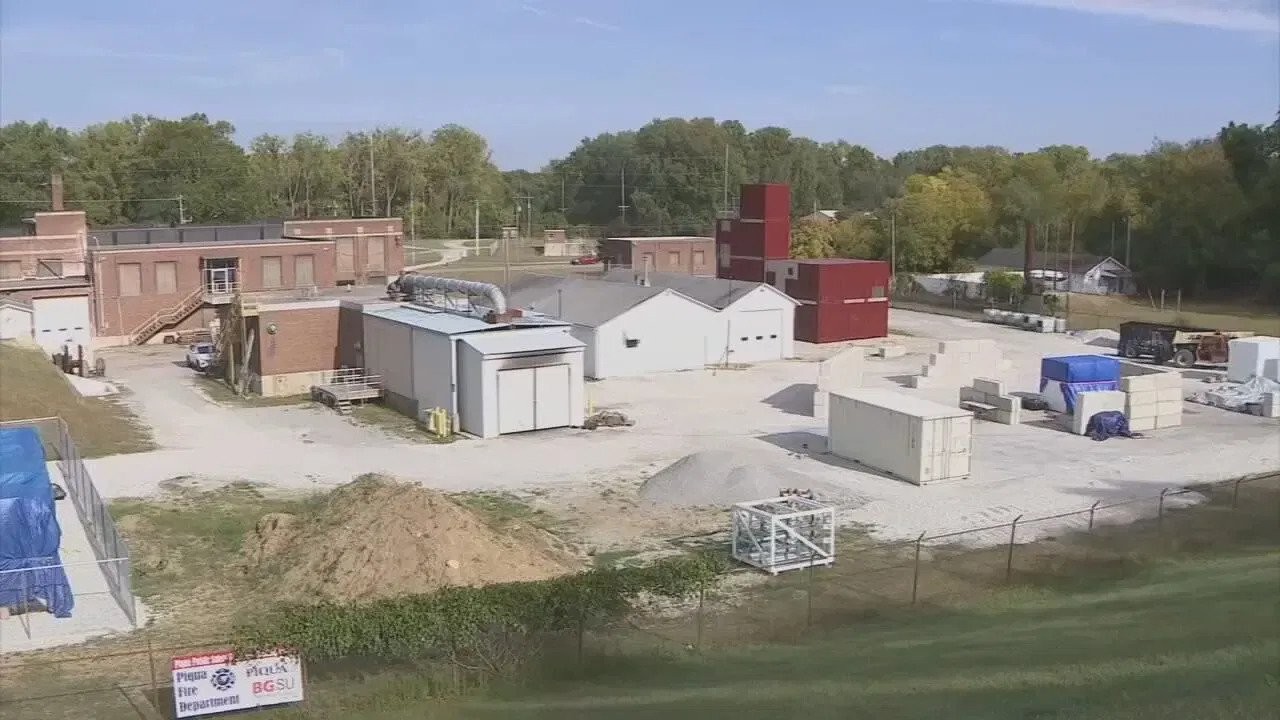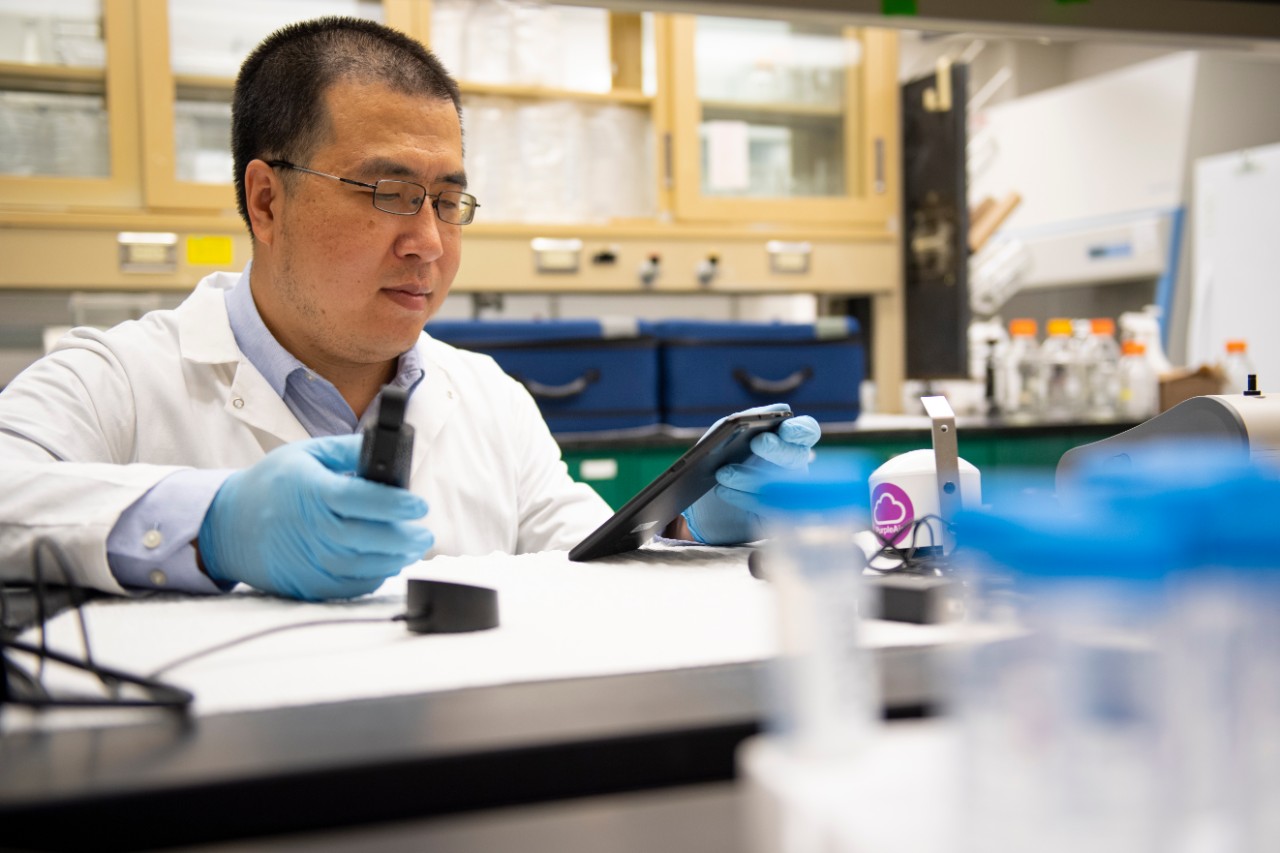
Dayton 24/7 Now: Environmental concerns after lithium-ion battery burns in Piqua, why the company was allowed to police itself
UC expert explains the environmental and health impact
People in the Dayton, Ohio suburb of Piqua are expressing concerns about the city burning lithium-ion batteries at a training facility near the Great Miami River.
The program had been going on for five years, since 2018, but the environmental impact of these lithium-ion battery burns is still unknown. After protests and demands for answers from city officials, the City of Piqua stopped its battery burn program on September 21, 2023. This after a site inspection from the Ohio EPA and RAPCA found two violations.
Dayton 24/7 Now produced a story on the issue, interviewing Jun Wang, PhD, of the Department of Environmental and Public Health Sciences at the UC College of Medicine.

Jun Wang, PhD, of the Department of Environmental and Public Health Sciences in the UC College of Medicine
“So lithium-ion batteries are actually quite dangerous, not even with just burning, the dangers come from chemicals in those batteries,” Wang said.
Wang said that the biggest concern of burning lithium-ion batteries is the air quality. He says chemicals inside those batteries include things like fluoride, hydrogen cyanide, and hydrogen fluoric acid.
“Of course, that's the normal phase, while it's actually burning, you add to the normal combustion products without burning anything, for example carbon monoxide, carbon dioxide, nitrogen oxides and other particulate conditions,” said Wang.
He was asked by Dayton 24/7 Now of the chemicals he mentioned, how could that affect someone breathing them in.
“Most of those toxic chemicals exist in a gas phase, which means they disperse fairly quickly. That's both good and bad," Wang said. "The good thing is when they disperse, they get diluted by the air. The bad thing is they disperse very quickly so it depends how far away you live from this facility, or how far away you work from this facility. It also depends on wind direction, if you are downwind to the release of those pollutants, that will have a lot of issues for your respiratory system, so people with asthma or COPD are particularly vulnerable to those gasses because they are very corrosive and some are very toxic even at a trace level, so even if you inhale a little bit you might have a longer problem.”
Lead photo of Piqua fire training facility/Dayton 24/7 Now
Next Lives Here
The University of Cincinnati is classified as a Research 1 institution by the Carnegie Commission and is ranked in the National Science Foundation's Top-35 public research universities. UC's graduate students and faculty investigate problems and innovate solutions with real-world impact. Next Lives Here.
Related Stories
Cincinnati researchers want to know if MRIs can work better
June 28, 2024
WVXU and the Cincinnati Business Courier highlighted a new collaboration between the University of Cincinnati College of Medicine, UC Health GE HealthCare, JobsOhio, REDI Cincinnati and Cincinnati Children’s to create an MRI Research and Development Center of Excellence located on UC’s medical campus.
UC opens Blood Cancer Healing Center
June 28, 2024
Media outlets including WLWT, Local 12, Spectrum News, the Cincinnati Enquirer and Cleveland.com highlighted the opening of the University of Cincinnati Cancer Center's Blood Cancer Healing Center.
Financial factors to consider when moving
June 27, 2024
Moving can be a stressful and expensive endeavor. When it comes time to move, there are important financial implications to consider, Gary Painter, PhD, the academic director of the University of Cincinnati’s Carl H. Lindner College of Business real estate program and a professor of real estate, told USA Today.
New project aims to better support teen mothers in Adams County
June 27, 2024
WCPO highlighted a partnership between the University of Cincinnati and the Adams County Health Department that is aiming to provide better support for teen mothers in the county.
Free Wi-Fi, work area coming to Greater Cincinnati
June 27, 2024
St. Lawrence Park in Price Hill now has free Wi-Fi and a furnished outdoor space for community members to access digital needs. The space is part of The Nodes Project, which stands for “Neighborhoods of Design Engagement": a collaboration between UC DAAP communication designers and community entities.
Study aimed at reducing opioid overdose deaths presents results
June 27, 2024
The University of Cincinnati's John Winhusen and Caroline Freiermuth discussed the evidence-based practices implemented during the HEALing Communities Study to fight the opioid epidemic with Spectrum News.
University of Cincinnati, UC Health collaborate with GE HealthCare on MRI research center
June 26, 2024
The University of Cincinnati and UC Health are collaborating with GE HealthCare, JobsOhio, REDI Cincinnati and Cincinnati Children’s to create an MRI Research and Development Center of Excellence located on UC’s medical campus.
The health impact of living near a natural gas leak
June 25, 2024
UC College of Arts and Sciences Professor Amy Townsend-Small talks to the BBC about the health issues faced by neighbors of leaking natural gas wells.
Male birth control gel inches towards FDA approval
June 25, 2024
The University of Cincinnati's Wesley Baas spoke with Yahoo News and the Cincinnati Enquirer about a new male birth control gel that could be close to receiving FDA approval.
University of Cincinnati Cancer Center launches Blood Cancer Healing Center
June 25, 2024
The University of Cincinnati Cancer Center celebrated the opening of its state-of-the-art Blood Cancer Healing Center June 24.
